A Lesser Known historical Attraction of Gujarat-Champaner-Pavagadh Monument
Champaner-Pavagadh Archaeological Park
Champaner-Pavagadh Archaeological Park is located in the Panchmahal District of Gujarat, India. It features archaeological, historical, and living cultural heritage sites cradled in an impressive landscape. Pavagadh Hill is a volcanic formation that rises 800 m above the surrounding plains. It includes the remains of settlements dating from the prehistoric to medieval periods. The Archaeological Park is represented by a hill fortress of an early 14th-century Hindu capital and the remains of an Islamic state capital founded in the 15th century. The Champaner-Pavagadh Monument is comprised of 12 separate areas- The remains of fortifications, palaces, religious buildings, and water-retaining installations, as well as the living village of Champaner.
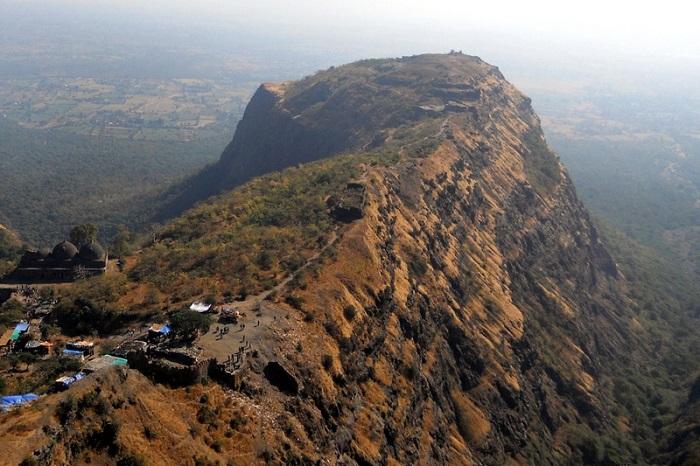
Champaner-Pavagadh Archaeological Park was, declared a UNESCO World Heritage Site in 2004. Champaner-Pavagadh Archaeological Park has Outstanding Universal Value including the remnants of prehistoric, early- and late-medieval periods, sophisticated, and ordinary settlements, and building complexes. Champaner’s UNESCO World Heritage site is declared around the historical city of Champaner, which was founded by Vanraj Chavda. He was the most prominent king of the Chavda Dynasty, in the 8th century. The city was renamed to one of Vanraj’s friends and army general Champa, also known as Champaraj.
Geography
The Champaner-Pavagadh heritage site is spread over an area of more than 1,329 hectares. The topography has undulating hillocks and plateaus. There are steep rock exposures formed by ancient volcanic eruptions and lava flows. Champaner-Pavagadh Archaeological Park is located about 50 kilometers away from Baroda and 68 km from Godhra, whose history is recorded from the 2nd century AD. The site has many religious monuments of Gujarati Sultans (of Turkish descent), Rajputs, and Jains. It includes the Palace of Mahmud Begada, grandson of Ahmed Shah, who founded Ahmedabad City.
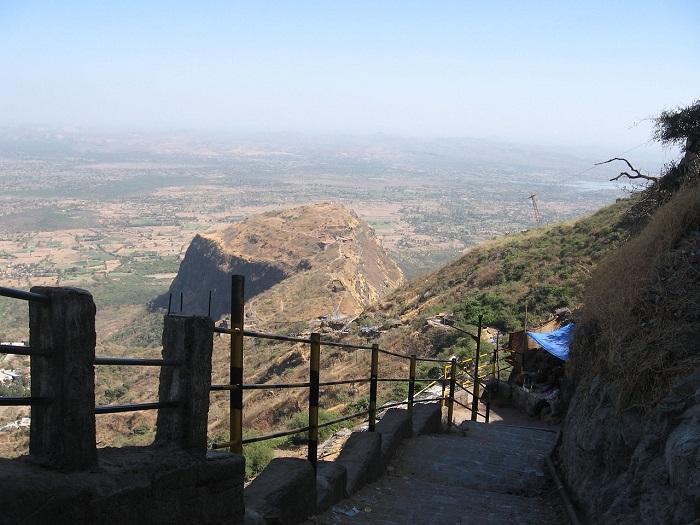
Champaner-Pavagadh History
Champaner’s UNESCO World Heritage site represents a perfect blend of Hindu-Muslim architecture, mainly the Great Mosque or Jama Masjid, which became a model for later mosque architecture in India. The Champaner-Pavagadh monument is an outstanding example of a very short-living capital, making the best use of its setting, topography, and natural features. Pavagadh became the capital of the Chauhan Rajputs around 1300, but in 1484 was taken by the Gujarat Sultan Mahmud Begada. After capturing Pavagadh, Sultan Mahmud Begada turned Champaner’s new capital at the base of the Hill. But its glory was brief when it was captured by Mughal emperor Humayun in 1535. The capital of Gujarat reverted to Ahmedabad, and Champaner fell into ruin. The Champaner-Pavagadh Archaeological Park site is studded with forts with bastions starting from the hills of Pavagadh and extending into the city of Champaner. Several palaces, entrance gates and arches, mosques, tombs and temples, residential complexes, agricultural structures, and water installations such as step-wells and tanks, dating from the 8th to the 14th century are simply extraordinary.
In the 13th century, Khichi Chauhan Rajputs conquered this area and built their first settlement on top of Pavagadh Hill and fortification walls along the plateau. The earliest built remains from this period include temples and water-retention systems. The Turkish rulers of Gujarat conquered the hill fortress in 1484. With Sultan Mehmud Begda’s decision to make this his capital the most important historic phase of this site began. The settlement of Champaner at the foot of the hill was rebuilt and remained the capital of Gujarat until 1536.
Best Tourist Attraction in Champaner-Pavagadh
The Kalika Mata Temple
The Kalika Mata Temple, located on top of the 800 meters high Pavagadh Hill, is an important Hindu shrine in the region. The Brahmanical temple of Kalika Mata attracts a large number of pilgrims from Gujarat and other parts of the country throughout the year. It is a centrally protected monument. The landscape and buildings are well-kept and completely conservated. The path to the Kalika Mata Temple summit passes through many old gates and cuts through staircase-like natural ledges of rock. Above this point, there is a very steep scarp with a marble temple and two lantern towers. The temple is easily reachable by ropeway.
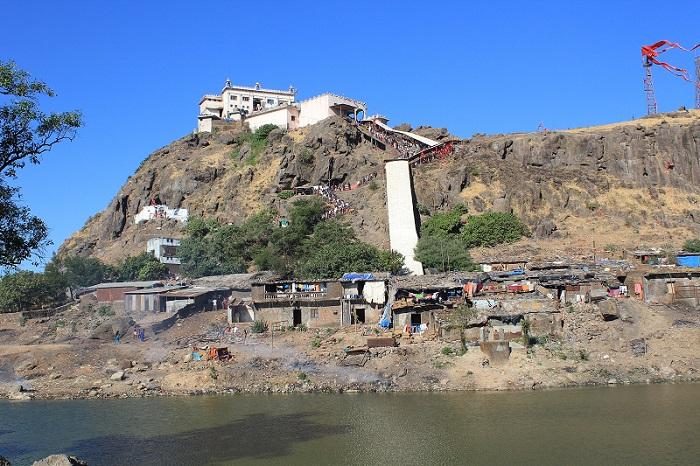
Saat Kaman
Saat Kaman is a prominent structure situated on the southern tip of Pavagadh hill. Saat Kaman means seven arches. However, there are only 6 arches that are currently in existence, the other one having been destroyed.
Navlakha Kothar
North of the Pavagadh mountain’s highest peak, the vast expanses of Navlakhi Valley can be seen. Here some dotted buildings can be seen, an overview of Mughal architecture. The T-shaped building is made up of bricks containing seven parts covered by a large dome, situated on the edge of the Navlakhi Valley. It is believed to be used as a storehouse for food storage in ancient times.
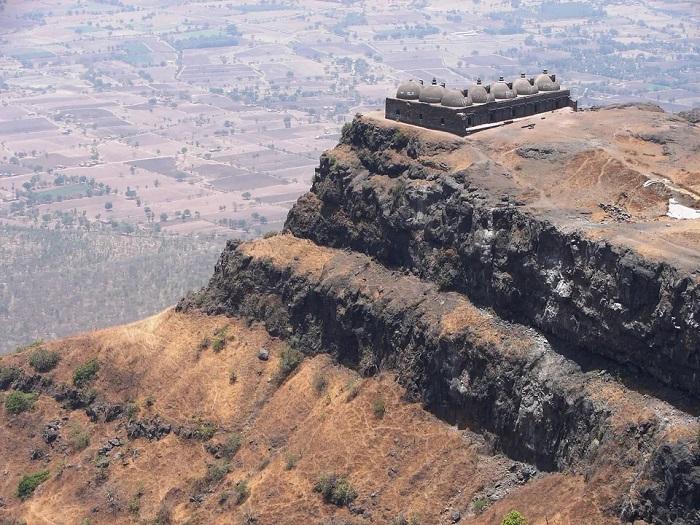
Helical Stepwell
Helical stepwell is a 16th-century well with a 1.2m-wide staircase that spirals down along the wall of the well. Making it quite unusual in design among step wells of the region.
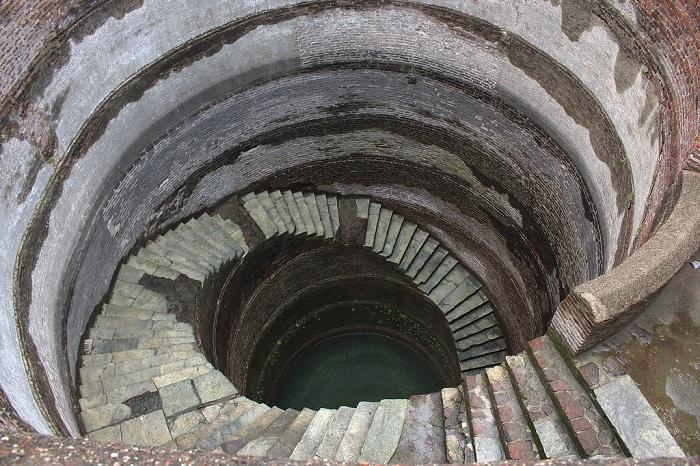
Champaner Pavagadh Archaeological Park
There are eleven different types of buildings at Champaner-Pavagadh, including mosques, temples, granaries, tombs, wells, walls, and terraces. The monuments are situated at the foot of and around Pavagadh hill. The Heritage Trust of Baroda lists 114 monuments in the area, of which only 39 monuments are maintained by the Archaeological Survey of India. The Champaner and Pavagadh make a rich heritage site dotted with forts, mosques, monuments, tombs, arches, temples, step-wells, and fortresses from the 8th to 14th centuries. Most of the land surrounding the hill is owned by the Forest Department.
Read More- An Ancient Gem in North Goa-The Arvalem Caves
The most impressive features of the Champaner-Pavagadh Monument are its 16th-century mosque Champaner Jama masjid with its beautiful blending of Islamic and Hindu architecture. The huge Jami Masjid, just outside the Citadel’s east gate, carved an entrance porch that leads into a lovely courtyard surrounded by a pillared corridor. Other beautiful mosques include the Saher ki Masjid, which was probably the private royal mosque, and the Kevda Masjid, 300m north.
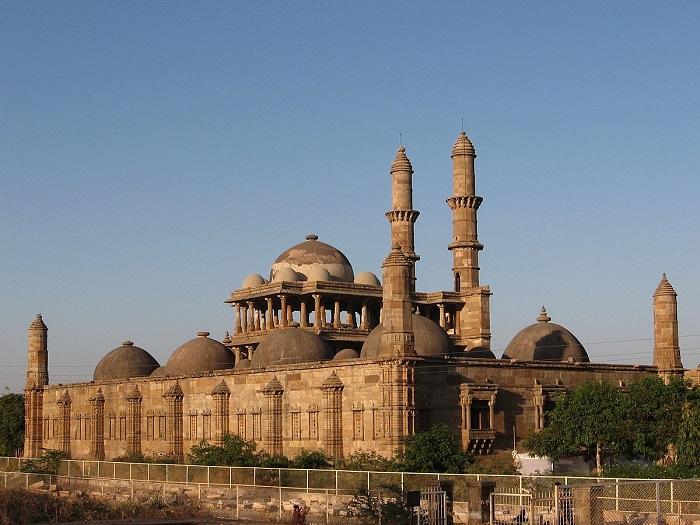
How to reach Champaner-Pavagadh Archaeological Park
Vadodara at a distance of 42 km is the nearest airport to Champaner. The nearest international airport to Champaner is Ahmedabad airport at a distance of 125 km. A cab is available from both airports to reach Champaner. The nearest railhead is Champaner, which comes in the Godhara-Vadodara line. However, it is best to take a train to Vadodara railway station which is well connected to major cities of India.
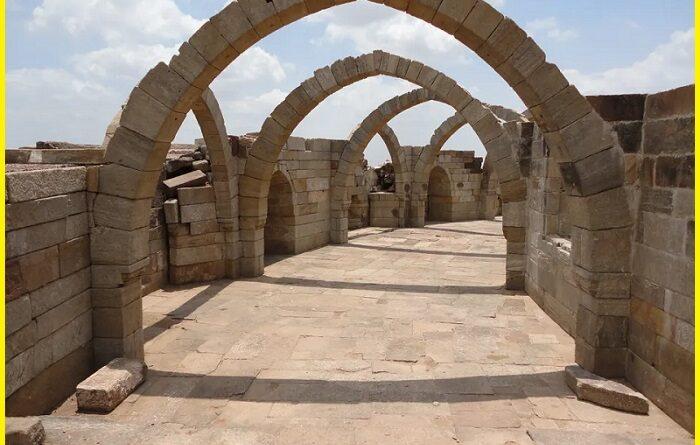

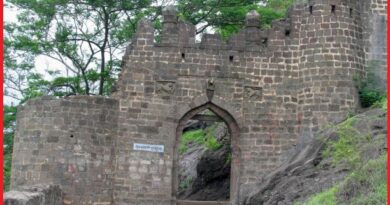

Pingback: Saputara-Gujarat's Majestic Hilltop Haven - Geotourism